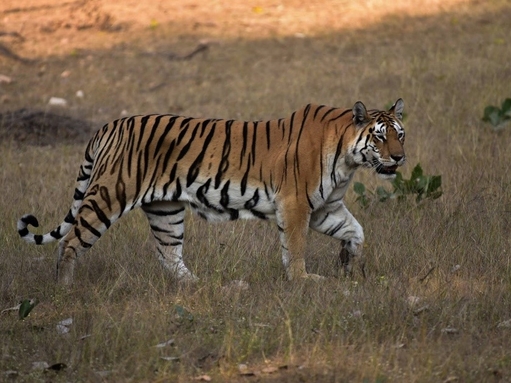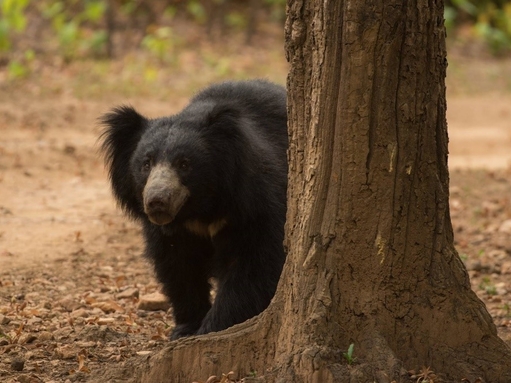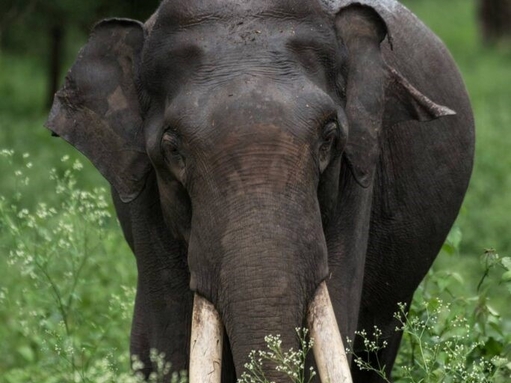Hi, I am Anish Banerjee, a member of the Lancashire Wildlife Trust Youth Council. I have just completed the second year of my BSc (Hons) Zoology degree at the University of Manchester. Unfortunately, due to the pandemic, I have been doing my course remotely back home in Bengaluru, India! For this reason, I thought it would be great to discuss the similarities and differences between India and the UK in the field of wildlife conservation.

India is home to 1.2 billion people. Yet she has some of world’s most charismatic species, including elephants, tigers, leopards, lions, rhinos, primates, crocodiles and four species of bear! In fact, most of these species have experienced a stupendous population growth in recent decades. Surprisingly India has 400 species of mammals, 1,200 species of birds and 500 species of reptiles. India is certainly the pinnacle of human-wildlife coexistence. In fact, leopards are thriving in the bustling city of Mumbai, which has a population of 12 million people. Despite this, the rate of human wildlife conflict is fairly low.
As the UK begins its rewildling journey, I believe there is a lot to learn about human-wildlife coexistence from India. If megafauna can thrive in the outskirts of Indian cities, there is no reason why Eurasian lynx cannot be reintroduced into the Scottish highlands.
Similarities in Environment Governance
A popular saying in India is that other than the complex railway system, the Indian Civil Services is the only other positive byproduct of centuries of British Colonism. That includes the Indian Forest Services. It is no surprise therefore, that the two nations share much similarity in the governance of their natural ecosystems.
Both the UK and India have their respective Environment Ministries. The work of these organisations predominantly revolves around national environmental policies and conservation action plans. However, much of the actual grassroots conservation work in both countries is the responsibility of local organisations. In the UK, for example, each county has its respective Wildlife Trust and, across the country, the Trusts maintain nearly 100,000 hectares of nature reserves.
Similarly, 30 State Forest Departments are entrusted with the preservation of natural ecosystems in India. The most prominent difference between the two countries is that the Wildlife Trusts are an independent trust, while India’s Forest Department is an entity of the state government. The Forest Officers are selected through a rigorous Civil Service Examination. Annually, the exam is taken by around a million participants who aspire to join the Police, Administrative and Forest Services. However, less than a thousand officers are selected (<0.1% success rate). These officers then form the bridge between grassroots conservation works and the national ambitions.
What about Conservation Outreach?
Education and outreach form a vital clog of both India’s State Forest Department and the UK’s Wildlife Trusts. A common obstacle for both is the urban disconnect with nature. Penetrating this barrier is essential if both countries truly want to rewild and Lancashire Wildlife Trust is doing wonderful work with campaigns including City Nature Challenge and 30 Days Wild, and the My Wild City project.
Similarly, the Karnataka Forest Department (the state I’m from) has produced a wonderful documentary on the region’s wildlife. Despite having the highest population of elephants and tigers in the wild, there was an evident oblivion regarding nature in the state. The documentary was produced in multiple languages, with numerous acclaimed filmmakers including David Attenborough, and renowned Bollywood actors getting involved in its production. The reception of the film by the general public was heartening. Effective communication is certainly crucial for conservation.
Ecosystem Restoration is the Key!
Ecosystem restoration is a critical part of the work of wildlife organisations in both countries. Lancashire Wildlife Trust is heavily focused on peat restoration. Similarly, in India, lake restoration and afforestation works are garnering much interest. Reintroducing species is also happening more often. The UK is well underway with beaver reintroductions, organisations are calling for a reintroduction of Eurasian lynx, and Lancashire Wildlife Trust has reintroduced locally extinct species like the large heath butterfly and field mouse to Greater Manchester. Similarly India hopes to revive her population of Asiatic cheetah!

Community-based conservation has become more popular recently in India. In the seven East Himalayan States, more than 80 per cent of the Protected Areas are community forest reserves. The Indigenous communities govern the utilisation of natural resources and the conservation of wildlife. However, the government does provide assistance in the form of funding and expertise. In the UK, around 73 per cent of forests and woods are privately owned, with the remaining 27 per cent owned publicly.
How involved are the youth in conservation?
The more differentiating aspect between the conservation works in both countries is the involvement of the youth. In the UK, young people are more involved in activism, in the form of campaigning and outreach. In India, most outreach work by young conservationists is limited to wildlife photography. Instead, the youth are more interested in academia, involving themselves in extensive biological and ecological research.
How different are the wildlife?
Studying in Manchester has allowed me to regularly spot wildlife which would be considered a rarity in India. I have been fortunate to spot a red fox and hedgehog in the grounds of my Hall of Accommodation, just off Oxford Road. Meanwhile, Martin Mere Wetland Reserve has left me awestruck.

I have grown up seeing charismatic species such as sloth bears, tigers, primates and elephants, but seeing smaller mammals generally excites most wildlife enthusiasts in India due to their nocturnal nature. Restrictions for the general public in forests act as a major barrier to spotting these creatures, and their scattered range does not aid the cause.
Much of the wildlife found in the UK and Europe is found in India as well. However, species such as Eurasian lynx, red foxes, weasels and hedgehogs are generally found in the less accessible areas of India. This includes the higher Himalayas, such as Ladakh, and western deserts. There are far more tourism restrictions in these sensitive ecosystems, so it is no surprise that spotting these species is a dream for many seasoned wildlife enthusiasts in India.
I hope that, post-pandemic, I can utilize the remainder of my time in the UK to spot wildlife which would otherwise take me years to find back home!
This blog was first posted for Lancashire Wildlife Trust.
Help us Help Them! Think Wildlife Foundation is a non profit organization with various conservation initiatives. Our most prominent campaign is our Caring for Pari intiative. Pari is a rehabilitated elephant at the Wildlife SoS Hospital. 25% of the profits from our store are donated to the elephant hospital for Pari. Other than buying our wonderful merchandise, you could donate directly to our Caring For Pari fundraiser.
